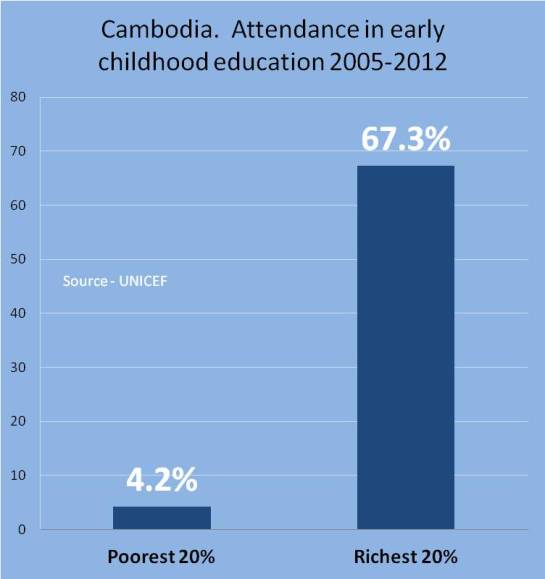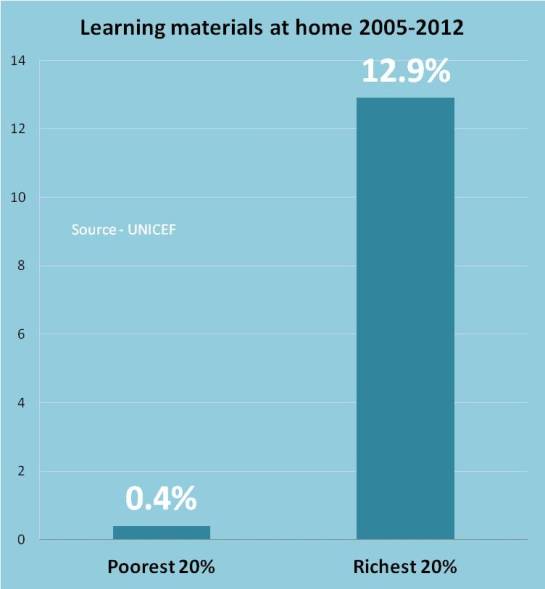
The photo of offerings, above, is one I took during Pchum Benh in 2015 near Siem Reap. I’ve been fascinated time and again by how consumer goods are such a price in Cambodia, relative to incomes, that cigarettes are often sold individually, at least in rural markets, rather than in packs. When you choose to buy one cigarette at a time, there is a thin line between solvency and debt.
I’ve been considering lately how poor Cambodians can climb out of poverty. There is a universal desire to get ahead, but there are no easy avenues to wealth for the poor to travel. Lenders who might advance some capital, for example through a MFI or micro-finance institution are not just lending against the ability of a borrower to give their business venture their very all; they are also lending against the high tide of risks faced by lower income people who live, daily, on the precipice of disaster. A crop failure. A stolen motorbike. An illness. Westerners are well insulated from such set-backs, we have insurances or sufficient economic resilience to take these things in our stride.
MFIs also face another risk – and that is the prospect that the borrower, desperate to raise enough capital to start a thriving business, already has loans with other micro-finance organisations. The risk isn’t about dishonesty so much as about financial literacy. The hopeful entrepreneur can only see the upside without appreciating the very high risks they face.
This is causing concern for micro-finance institutions of which there are around 45 registered organisations that are signatories to a shared set of operating principles and are members of a well-respected industry association, the Cambodia Micro-finance Association. Together these MFIs have lent to 1.8 million borrowers, which is around one in every five adults aged 22+ – a staggering number.
Or it may be less staggering, given that a significant proportion of borrowers appear to have loans from more than one MFI (which is a practice actively discouraged by the lenders themselves.) Some of these are savvy borrowers, calling into question the idea of ‘one client: one loan.’
But not all borrowers are in this boat. Some are taking out extra loans because they are having trouble meeting existing debts.
Just as troubling, a report cited in The Guardian in March 2015, conducted by the Institute of Development, found that half the borrowers had taken such measures as eating less, or eating poor quality food in order to meet their repayments. Talk about a thin line between solvency and debt.
MFIs are adapting to the changing marketplace, but a general conclusion drawn from a 2007 Stanford Social Innovation Review study, by Aneel Karnani, into the effectiveness of micro-finance concluded that the service works for those above the poverty line, but often fails – deeply – when it comes to serving the needs of those below the line.
If the MFIs are adjusting to the market, and serving a growing class of more financially savvy customers (only a 15 years ago banks were having trouble attracting retail customers who had lost everything under previous regimes,) there is another problem in the sector: the unregistered lenders of which, there are estimated to be 60 in operation, and that’s not counting the traditional pawn-brokers in Cambodia.
In fact the Government’s financial strategy blueprint Financial Sector Development Strategy 2011-2020 ,expressly tasks the Cambodian Micro-finance Association (CMA) with bringing rogue operators under their umbrella and developing stronger consumer-friendly rules with which to self-govern members as well as introducing financial literacy programs to help educate the public.
The regulation of pawn brokers and money lenders is a harder task, but the Financial Sector strategy has these operators in their sights. Again there will be a focus on developing rules that help protect borrowers from over-zealous lending, or the onerous penalties of repayment failure. A frequent practice right now is to use farmland as collateral, and if a borrower gets behind, well, they lose everything.
Getting ahead usually requires capital. Unfortunately for the very poor, the best lenders may be of some benefit, but the marketplace is full of dangers. I think Risk is a concept about which every student needs to be taught. Some education may help keep some more people on the right side of that thin line.
- For the Guardian Article – DROWNING IN DEBT – CAMBODIA’S POOR. A fine piece of reporting.








You must be logged in to post a comment.